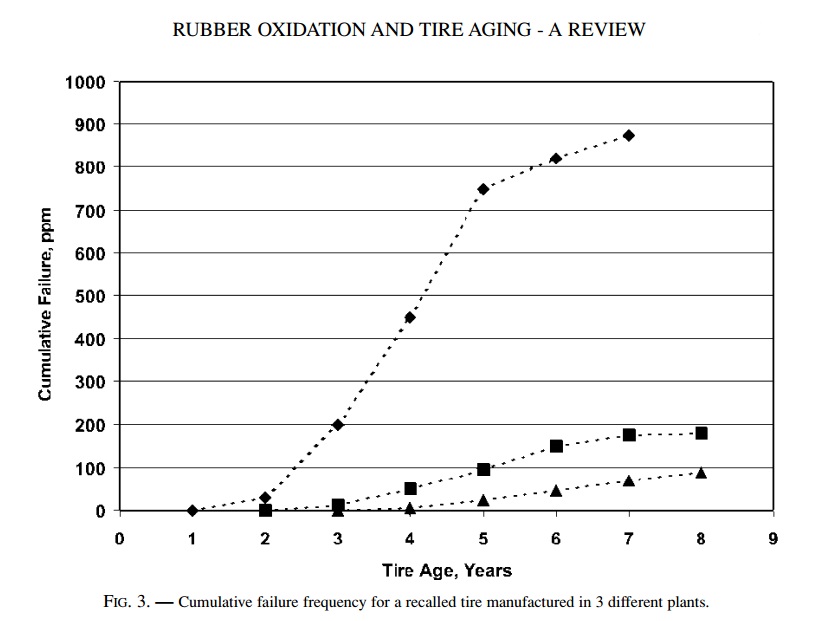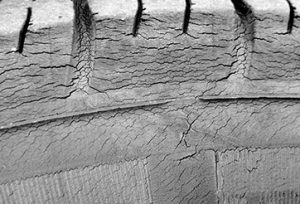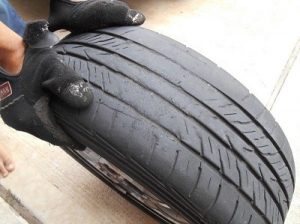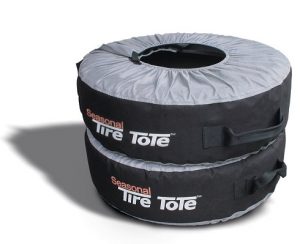How Long Do Tires Last if Not Used?
If not used, tires last for 6-10 years, depending on the storage and environmental conditions. Overall, the time limits for stored tires are much the same as for tires that are being used. The National Highway Traffic Safety Administration (NHTSA) and official manufacturers suggest a tire is only 100% safe to use until it turns 5-6 years old. However, some admit that a tire can be operable up to 10 years if you check it for issues annually after the 5th year.
What Can Make Tires Last Less: Factors Tire Aging Depends On
The time that stored tires last is influenced by two groups of factors:
- Environmental conditions
- Storage conditions.
[insert page=’2137′ display=’content’]
Environmental Conditions
This group includes oxygen, ultraviolet (UV) light, ozone, and heat damage.
Oxygen
Oxygen is the main element responsible for rubber deterioration, as it breaks rubber down from both outside and inside. Most tires are inflated with compressed air, which is 21% oxygen. So, unlike UV and ozone damage, the process of oxidation is twice as fast.
Special antioxidant compounds are used in rubber, but they only slow the aging process down. If the polymer structure gets altered by oxygen in any way, it results in rubber deterioration.

UV Light
When tires are exposed to sunlight, the rubber immediately starts absorbing UV radiation. The process is the same with both natural and synthetic polymers, which make up rubber compounds. The process of deterioration, due to the impact of UV, is called photo degradation.
Tire manufacturers try to fight this with the help of carbon black. It’s a finish that is put on a tire and absorbs sunlight, transforming it into heat. However, any shield loses its ability to stabilize UV radiation after some time. So, the rubber is eventually exposed to the destructive rays, and the tires last for less time.
Ozone
In brief, ozone is a type of oxygen with an extra atom in it, which can be found in the stratosphere and troposphere. The type of ozone that is destructive to rubber is usually a result of manmade pollution. The impact of the gas on tires was first noticed in the 1950s, with rubber deteriorating faster in large cities than in small towns.

Tire manufacturers try to fight ozone damage by putting special compounds in the products they produce. These waxes and oils can help if the tire is being used, meaning that the compounds are brought closer to the surface. However, as there’s no circulation when tires are simply stored, the compounds become useless and tires don’t last as long.
It’s important to remember that cracks from ozone impact are irreparable.
Heat
Heat, combined with oxygen, accelerates rubber aging with the process of thermo-oxidative degradation. According to NHTSA research data, tires last less time in hotter climates, and consequentially, they fail quicker, no matter whether they are ridden or stored.
Storage Conditions
This group includes temperature and light, ozone exposure, humidity, and deformation.
Temperature and Light
It’s recommended to store tires in a cool place, preferably not warmer than 77 F and not colder than 32 F. The storage should also hide the tire from direct sunlight or strong artificial light, as both usually emit UV.
Ozone Exposure
Tires have to be stored in a place without ozone-producing equipment, which includes electric motors, fluorescent lamps, generators, etc. Anything that can make electric discharges has to be taken away from the room. Excess exposure to ozone can cause cracking when any pressure is applied.
Humidity
There should be no water bodies or any other source of humidity near or within the storage room. If exposed to excessive humidity, tires last for less time – they become covered with condensation, which is highly undesirable. Liquids are also potential sources of ozone, which is destructible for rubber.

Deformation
Tires should not be stored mounted or inflated, but vertically on a slightly elevated surface. Such a position will put the least amount of pressure on the tire. If it’s impossible to store them vertically as there is too many and not enough room, make sure the pile isn’t higher than 6 feet. In such a case, there’s no extreme pressure put on the sidewalls of the bottom tire. Deformed tires will not regain their form when pressurized – on the contrary, they may break.
How to Store Tires to Make Them Last Longer
There are certain things you can do to improve storing conditions and make your tires last longer:
- Clean them before storing.
If the tires were already mounted, clean them with a brush and wash with water and soap, drying afterwards. This will help you keep undesirable contaminants and excess humidity out of the tire’s surface. Also, don’t apply any tire dressings after the cleaning, as all needed compounds are already in the rubber. - Don’t store them mounted on a loaded vehicle.
If you intend to store a vehicle, make sure to take the tires off it. The pressure from the load will stretch and deform the rubber, making your tires age quicker. - Put tires in airtight plastic bags.
 Tire totes.After they are clean and dry, put each tire in an airtight plastic bag – this will keep the oils from evaporating. You have to make sure you take as much air out as possible and close the bag tightly.
Tire totes.After they are clean and dry, put each tire in an airtight plastic bag – this will keep the oils from evaporating. You have to make sure you take as much air out as possible and close the bag tightly. - Use tire totes.
For more convenience in storing and carrying, use tire totes, but remember that they aren’t airtight. A good way to counteract this is to put the tires in bags first, and then use tire totes. - Keep UV, humidity, and ozone away.
Store tires in a cool dry place without potential sources of ozone or strong, direct light. This will keep the main environmental hazards away. The best way to make tires last longer is to put them into a climate-controlled room. - Store them white-to-white, black-to-black.
If you stack many tires together, put white parts against the white, so not to stain them. The rubber used for the side with white parts and the black side may have different compounds. And as the oil from the tire’s black side can migrate to the white parts, it’s better to stack color to color. - Don’t hang them unless mounted.
If you store your tires mounted on wheels, you can hang them without any doubts. However, if the tire isn’t mounted, you should never hang it for a long time, as it will deform. Also, if the tires are mounted and you don’t want to hang them, it’s better to store them stacked.
Why Tires Age Even If They’re Not Used?
A tires service time expires because of the rubber aging, as the material is always exposed to oxygen that makes the particles become harder and less flexible. As a result, the rubber starts to crack outside and inside, which may cause tread or steel cord separation and complete tire failure.
Furthermore, stored tires last for a limited amount of time as they aren’t lubricated. When you ride a tire, the heated oils within it circulate and grease the rubber, preventing premature drying. When it’s in storage, the oils and emollients dry out, causing known consequences. Since even long-lasting rubber eventually ages, it’s recommended to not use a 10+ year old tire. To learn more about how often you should buy new tires, read this post.
It’s very important to determine the age of the tire you store by reading the date code on its sidewall. Remember, the age is counted from the year of manufacture, not the date you purchased it. If you buy a tire that was stored in a shop for 5 years, you may be wasting your money.
Read the Original article at Utires.com